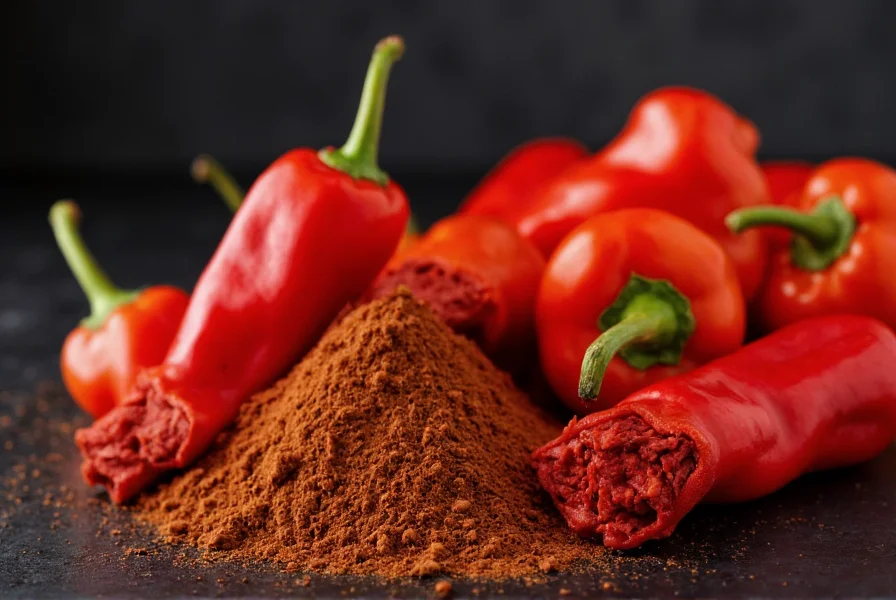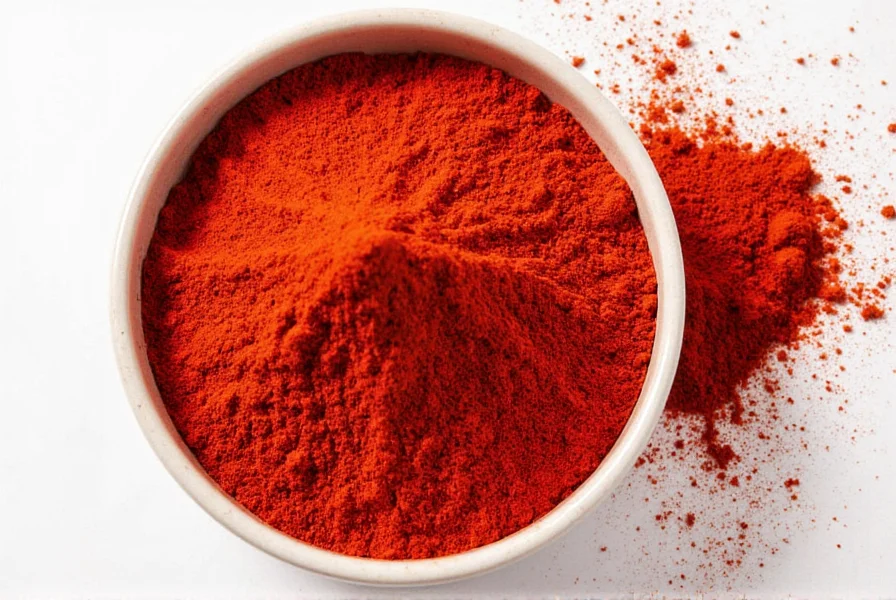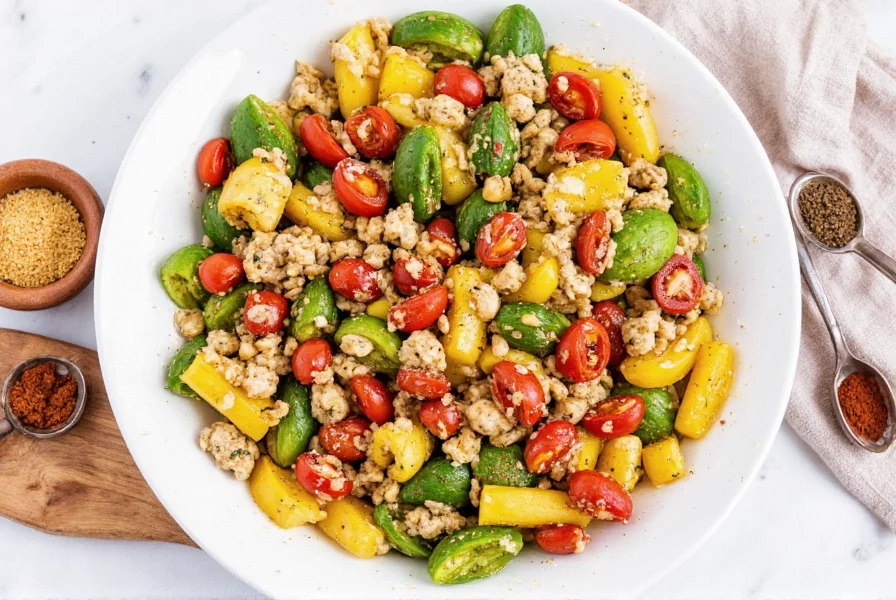Is Smoked Paprika Healthy? The Spicy Truth Behind This Flavorful Staple

Table of Contents
- What Is Smoked Paprika?
- Health Benefits of Smoked Paprika
- Nutritional Breakdown
- Possible Concerns and Myths
- How to Use Smoked Paprika Like a Pro
- Buying Guide: Finding the Best Smoked Paprika
- Conclusion
What Is Smoked Paprika?
Smoked paprika is made from dried red peppers that are slowly smoked over oak wood, then ground into a fine powder. Originating in Spain, this vibrant red spice adds a rich, smoky depth to dishes that can't be matched by regular paprika.

The difference between regular paprika and smoked paprika lies in the preparation method. While both come from sweet or chili peppers, only smoked paprika undergoes the slow-smoking process that imparts its unique flavor profile. It's commonly used in Spanish cuisine like chorizo, paella, and patatas bravas.
Health Benefits of Smoked Paprika
Yes, smoked paprika is healthy, especially when used as a natural seasoning alternative to salt and artificial flavorings. Let’s break down why this spice deserves a permanent spot on your pantry shelf:
- Rich in Antioxidants: Packed with carotenoids and polyphenols that fight oxidative stress in the body.
- Vitamin C Powerhouse: Contains more vitamin C than black pepper and some citrus fruits!
- Anti-Inflammatory Properties: Capsaicin (the compound responsible for heat) may help reduce inflammation.
- Digestive Aid: Stimulates digestion without irritating the stomach lining like spicy chili powders can.
- No Added Calories: A dash won’t affect your daily calorie count—perfect for low-calorie diets.
Nutritional Breakdown: Smoked vs Regular Paprika
Let’s compare the two types side-by-side to see how they stack up nutritionally.
| Nutrient | Smoked Paprika (1 tsp) | Regular Paprika (1 tsp) |
|---|---|---|
| Calories | 6 | 6 |
| Carbohydrates | 1.3g | 1.3g |
| Fiber | 0.7g | 0.6g |
| Vitamin C | 9mg (15% DV) | 6mg (10% DV) |
| Vitamin A | 485 IU (10% DV) | 400 IU (8% DV) |
| Iron | 0.3mg (2% DV) | 0.2mg (1% DV) |
| Antioxidants | High | Moderate |
| Flavor Profile | Smoky, Earthy | Sweet, Mild |
While both types are nutritious, smoked paprika often contains higher levels of antioxidants due to the slow drying and smoking process. Plus, the added flavor depth means you can use less while still enhancing your dish significantly.
Possible Concerns and Myths About Smoked Paprika
Despite its health benefits, there are a few myths and possible downsides to be aware of when it comes to smoked paprika.
Myth: Smoked Paprika is High in Sodium
This isn’t true unless you're buying a pre-mixed seasoning blend. Pure smoked paprika doesn't contain sodium unless added during processing. Always check the label!
Concern: Polycyclic Aromatic Hydrocarbons (PAHs)
Since smoked paprika is produced using smoke, there’s a slight concern about PAHs—chemicals formed during incomplete combustion that are known carcinogens.
- Most commercial brands now use controlled smoking methods to minimize PAH formation.
- Look for organic or certified products if you're concerned.
Myth: All Smoked Paprika Is the Same
Not all smoked paprika is created equal! There are three main types:
- Dulce – Sweet and mild, common in Spanish stews.
- Agridulce – Slightly bitter, with a hint of heat.
- Picante – Hot and spicy, perfect for bold dishes.
How to Use Smoked Paprika Like a Pro
Ready to add more flavor and nutrition to your meals? Here are some easy ways to incorporate smoked paprika into your cooking routine:
Top 5 Ways to Use Smoked Paprika
- Grilled Meats: Rub onto chicken, pork, or steak before grilling.
- Deviled Eggs: Sprinkle on top for a smoky twist.
- Roasted Vegetables: Toss with olive oil and paprika for extra depth.
- Chili & Stews: Add richness and warmth to any hearty dish.
- Spiced Popcorn: Mix with melted butter and nutritional yeast for a snack upgrade.
Pro Tips for Cooking with Smoked Paprika
- Add it early in long-cook recipes to infuse flavor throughout.
- To avoid bitterness, don't burn the paprika—it should gently toast into the oil.
- Store in a cool, dark place to preserve its vibrant color and flavor.
Buying Guide: Finding the Best Smoked Paprika
With so many options on the market, choosing the best smoked paprika can be tricky. Let’s break down what to look for based on your needs:
Key Features to Consider
- Origin: Authentic Spanish smoked paprika (Pimentón de La Vera) is considered premium quality.
- Type: Decide between dulce (sweet), agridulce (bitter-sweet), or picante (spicy).
- Certifications: Organic, non-GMO, and gluten-free labels matter for purity.
- Packaging: Dark glass jars or opaque containers protect flavor and nutrients.
- Price Range: $5–$20 per container depending on brand and quality.
Top 5 Smoked Paprika Picks
La Dalia Pimentón de la Vera Dulce
Features: Sweet and mild, perfect for beginners.
Best For: Soups, rice dishes, and creamy sauces.
Size: 2 oz
McCormick Ground Smoked Paprika
Features: Affordable and widely available.
Best For: Everyday cooking and baking.
Size: 1.35 oz
Penzeys Smoked Spanish Paprika
Features: Strong smoky flavor, pure and unadulterated.
Best For: Bold dishes like grilled meats and stews.
Size: 1.5 oz
Badia Smoked Paprika
Features: Budget-friendly option with decent flavor.
Best For: Latin American and Tex-Mex dishes.
Size: 1 oz

La Chinata Smoked Paprika
Features: Premium quality with complex earthy notes.
Best For: gourmet cooking and special occasions.
Size: 2.1 oz
Comparison Table
| Brand | Flavor Profile | Quality | Use Case | Best For | Price |
|---|---|---|---|---|---|
| La Dalia | Sweet & Mild | Authentic Spanish | Everyday cooking | Beginners | $8 |
| McCormick | Mild Smoke | Commercial grade | Basic seasoning | Home cooks | $5 |
| Penzeys | Strong Smoke | Organic | Bold flavors | Foodies | $12 |
| Badia | Moderate Smoke | Economical | Tacos & grilled foods | Latin cuisine fans | $4 |
| La Chinata | Earthy & Deep | Artisanal | Gourmet recipes | Chefs & connoisseurs | $15 |
Conclusion: Is Smoked Paprika Healthy?
In short, yes—smoked paprika is not only healthy but also incredibly versatile. Whether you're looking to boost flavor without extra calories or reap the antioxidant benefits of natural spices, smoked paprika delivers on all fronts.
From its anti-inflammatory properties to its digestive benefits, this Spanish staple has earned its place in every modern kitchen. With our handy buying guide and usage tips, you’re now equipped to make smart choices and elevate your dishes effortlessly.
So next time you reach for the salt shaker, think twice—and grab the smoked paprika instead!










 浙公网安备
33010002000092号
浙公网安备
33010002000092号 浙B2-20120091-4
浙B2-20120091-4